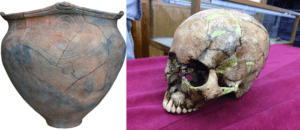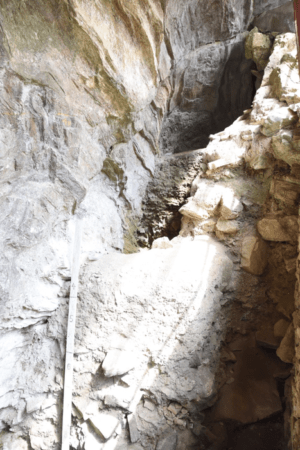
AMERICAN ASSOCIATION FOR THE ADVANCEMENT OF SCIENCE (AAAS)—The ancestry of modern-day Japanese populations can be traced back to 3 ancient cultures, rather than 2, according to an analysis of 12 newly sequenced ancient Japanese genomes spanning 8,000 years and 5 previously published genomes. The findings* support that the early hunter-gatherer Jomon population were the archipelago’s sole inhabitants until about 3,000 years ago, when Yayoi migrants from mainland China and Korea moved to the south of Japan, bringing wet-rice agriculture. Later, Kofun migrants, which may have had predominately Han Chinese ancestry, arrived in Japan, marking a period of affinity with Korea and China demonstrated by imports including mirrors, coins, and raw materials for iron production. While previous ancient DNA research has suggested modern Japanese populations have dual Jomon and Yayoi origins, the demographic origins and impact of the archipelago’s agricultural transition have remained largely unknown. To investigate, Niall P. Cooke and colleagues sequenced 12 ancient Japanese genomes from both pre- and post-farming periods and analyzed 5 previously published prehistoric Japanese genomes, finding that all of the Jomon individuals belonged to mitochondrial haplogroups (a group of alleles inherited together from one parent) that are rare outside Japan today, while the Kofun individuals belonged to mitochondrial haplogroups common throughout present-day East Asia. While the spread of agriculture in other regions has often involved one population replacing another, Cooke et al. found genetic evidence of almost equal genetic contributions from indigenous Jomon individuals and new immigrants during the Yayoi period, suggesting Japan’s agricultural transition involved assimilation instead. Furthermore, the researchers found that Kofun period individuals and modern Japanese people are almost genetically indistinguishable, suggesting that the genetic makeup of Japanese populations has remained relatively stable over the past 1,400 years.
____________________________

Kamikuroiwa rock shelter – this site is located in Kumakogen, Kamiukena District, Ehime Prefecture of Shikoku, where the oldest Jomon individual sequenced in this study was found. Nakagome Lab
____________________________

Jomon pottery from the Hirajo shell midden (Late Jomon period) and a skull from which ancient DNA was extracted. Nakagome Lab
____________________________

Jomon potteries excavated from the Odake shell midden (Early Jomon). A buried skeleton in this site had a specific burial practice in which the body was placed in a flexed position with bent legs. Nakagome Lab
____________________________
Article Source: AMERICAN ASSOCIATION FOR THE ADVANCEMENT OF SCIENCE (AAAS) news release.
*Ancient genomics reveals tripartite origins of Japanese populations, Science Advances, 17-Sep-2021. https://www.science.org/doi/10.1126/sciadv.abh2419
Summary author: Shannon Kelleher
______________________________
Advertisement




